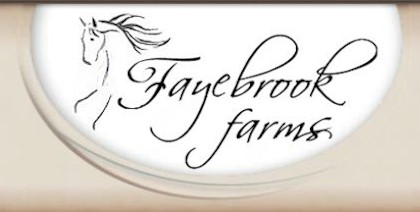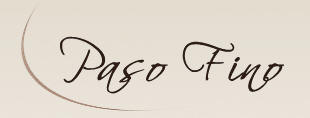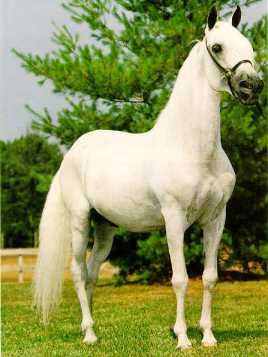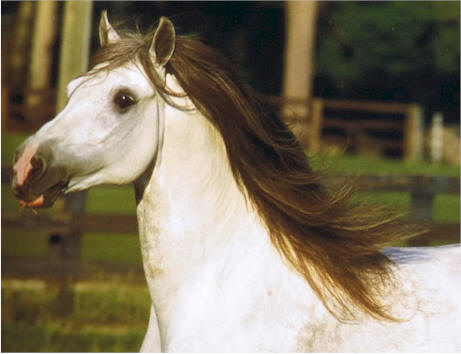|
|
|||||||
 |
|
||||||
|
For over three centuries the Spanish and Portuguese Empires sent a great number of ships beyond Europe to the Caribbean and Americas, carrying the explorers, missionaries and conquistadors. Among their supplies and tools for conquest and colonization probably the most important cargo was domesticated animals like the battle trained canine Molosers and, even more essential to the Conquistadors, their horses - Andalusians, Abaco Barb, and Jennets, collectively referred to as Colonial Spanish horses. These horses had majesty and gait, adding to the visual impact the conquistadors made, but most importantly these equine had unbelievable stamina and brio which allowed them to carry their riders through battle (along with armaments and plunder) or travel for days on end, traversing precarious mountainous terrain, impenetrable tropical forests and open ranges. These first Colonial Spanish or Iberian horses are known to have arrived in the late 13th century on Columbus's second voyage and subsequent Atlantic crossings included more equine. These horses remained in the Americas and served as the foundation stock for remote New World outposts used by the Conquistadors through the 17th Century. Traces of this Spanish Colonial equine ancestry has been noted in other breeds like the North American mustang or Perusvian Paso. Yet one of the most show-stopping descendents is the Paso Fino that was developed and flourished in the more isolated Latin American countries like Puerto Rico, Colombia, Cuba, the Dominican Republic, Aruba, and Venezuela, all preeminent producers of Paso Fino stock. For centuries the people of these Latin American countries have prized these animals – the Paso Fino Show Horse is a sport in these countries, similar to how today North Americans favour baseball or football. Whether a Paso Fino qualifies for a show ring or not they are held in high regard by all ages and walks of life. Paso Finos were taken to town and shown off to the community as the trainers of these breeds took great pride in their horses. They are ridden in parades, featured in cultural festivities, enjoyed on trail rides and in many instances became the main means of transportation for average folk living and working in remote areas. Not only was the horse built for hard work or fun, the Paso Fina is an athlete with energy, proud attitude, intelligence, as well as an ever so smooth sure-footed rhythmic gait, a totally natural, precise four-beat, lateral ambling gait, that distinguishes the Paso Fino from all other horses in the world and produces the smoothest ride imaginable. "So unique that they have no trot or gallop, they pace," says Andres Pedro Ledru in a report about horse races in July 1797, " a gait so quick that the eye can't fallow the movement of the legs." The rider should appear virtually motionless in the saddle and there should be no perceptible up and down motion of the horse's croup. A well-conditioned Paso Fino can travel for hours without tiring, and because of the smooth gait, so can the rider. In fact the name Paso Fino means "fine step" and they are not just beautiful and elegant to behold and to ride they are affectionate and loyal animals, too. Several generations of serious horse lovers, breeders and trainers have dedicated themselves to improving the bloodlines, advancing the natural ability of the Paso Fino, enhancing the different characteristics in the Paso Fino through selective breeding. Training was never measured in terms of time spent but supported the quality of the training, a belief that we at Fayebrook Farms want to emulate and maintain in our programs. (This is one of the reasons why we require horses we train to be with us for a minimum of 90 days. It is quality over quantity.) World awareness of the Paso Fino, as we know it today, was not wide spread until the middle of the 20th century. During the Spanish American war there was some exposure to the breed but not until after WW11 did Americans start bringing the Paso Fino to North America. In the last few decades North Americans have become enthralled with the Paso Fino and through their passion have begun developing their own breeding and training program, with a lot of help and input from knowledgeable, talented and generous experts from Paso Fino countries. Characteristics of the Paso Fino
Disposition - an extremely willing horse that strives to please because it truly enjoys the camaraderie of humans, spirited and responsive. Size - 13.2 to 15.2 with 13.3 to 14.2 being the typical. Weight is 700 to 1000 pounds. Full size may not be attained until the fifth year. Coloring – varied, every equine color, with or without white markings, including bay, black, buckskin, palomino, chestnut, grey, roan and even pinto. The mane, tail, and forelock i- full luxurious and long, so beautiful no artificial additions are necessary and for the show ring non are allowed. Head - well-shaped, defined and in proportion to the body. Displays an alert and intelligent face with large expressive eyes. Neck is gracefully arched, medium in length, allowing for a high carriage. Forehand - shoulders slope into the withers with great depth through the hearth. Midsection - the top line should be proportionately shorter than the underline. The back is strong and muscled. Hindquarters - croup is slightly sloping with rounded loins, broad hips, and strong hocks. The tail is carried gracefully when in motion. Legs - straight with refined bones, strong, well-defined tendons, and broad, long forearms with shorter cannons, thigh and gaskin are strong and muscled but not exaggerated, pasterns are sloping and medium in length. |
|||||||
|
|
|||||||
|
|
|||||||

 The
Paso Fino is a rare, naturally gaited, lively spirited and
resilient breed of equine developed in Latin America, but whose
ancestry can be traced back to 14th Century Spanish or Iberian
equines.
The
Paso Fino is a rare, naturally gaited, lively spirited and
resilient breed of equine developed in Latin America, but whose
ancestry can be traced back to 14th Century Spanish or Iberian
equines. Gait
– most striking feature - smooth, natural rhythmic and balanced
gait, unique to the breed. Paso Fino horses demonstrate the gait
from birth; however, some foals show it more than others.
Gait
– most striking feature - smooth, natural rhythmic and balanced
gait, unique to the breed. Paso Fino horses demonstrate the gait
from birth; however, some foals show it more than others.